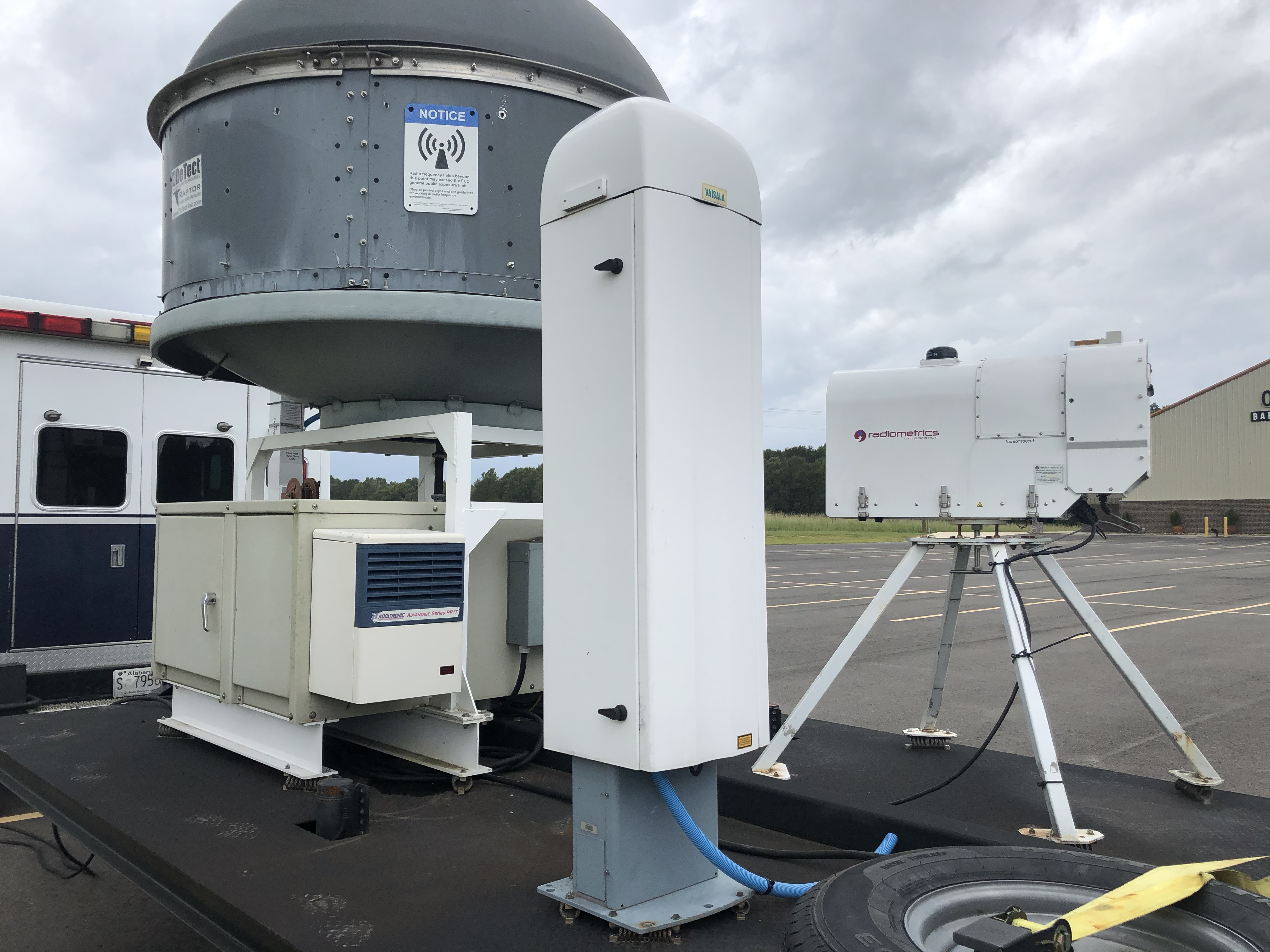|
LiDAR (Light Detection And Ranging) technology is utilized widely in the meteorological community. Lidar works by emitting low-power laser pulses into the atmosphere. The receiver then detects any back-scattered returns from the atmosphere. Unlike Doppler Wind Lidars, ceilometers have a longer wavelength and can therefore detect clouds and aerosols at a much greater altitude, but do not provide particle motion information. Knowing cloud base, cloud thickness, and even detecting aerosol depth in the boundary layer play an important role in understanding the boundary layer characteristics.

|

Ceilometer data showing aerosols in the boundary layer (BL) at night and a building convective BL throughout the day. 
The MIPS Ceilometer sees smoke from local fires at night. |

